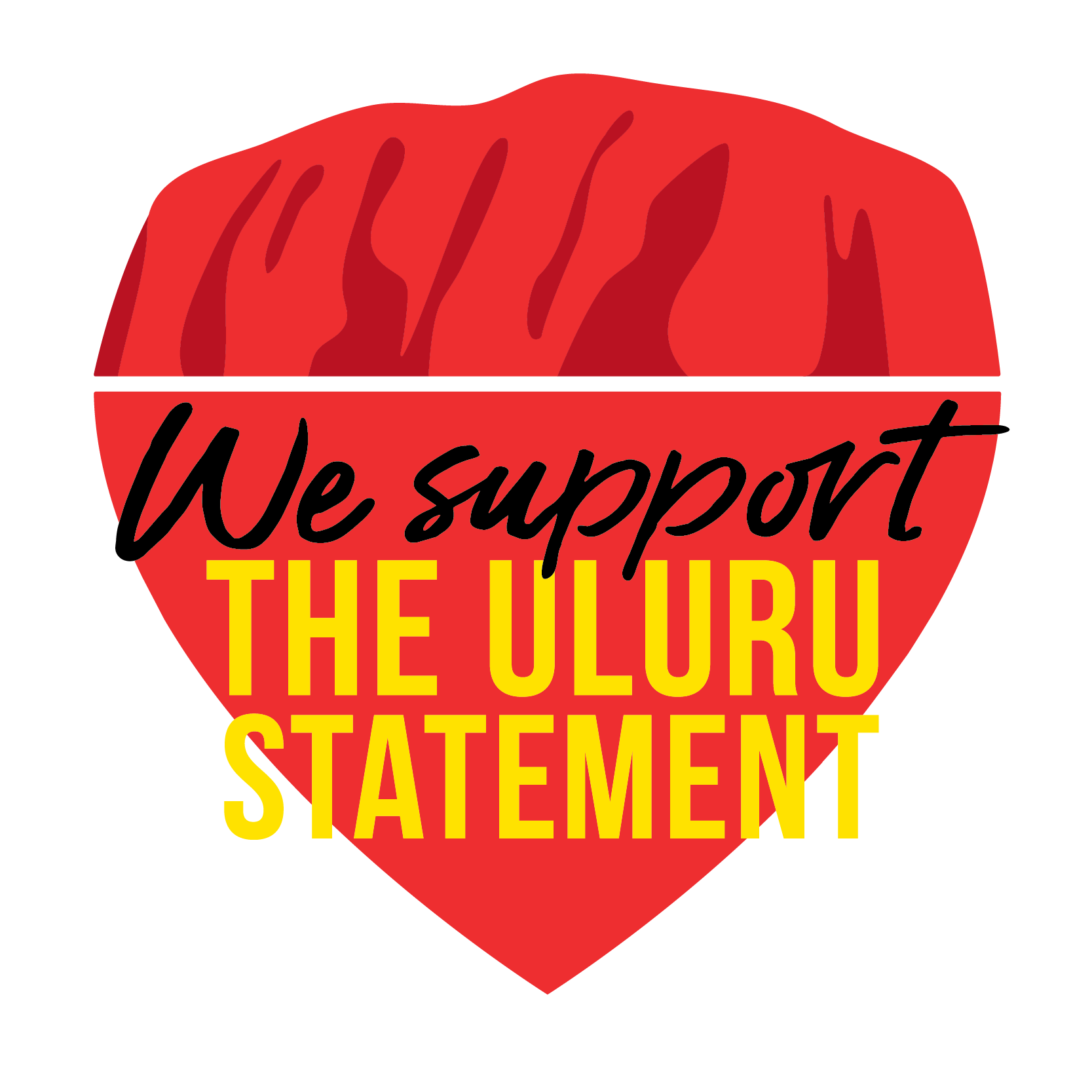Author: Yvonne Lay, Good Shepherd Manager Inclusion & Cultural Safety
What is Good Shepherd’s position on the Voice to Parliament?
Good Shepherd supports the Uluru Statement from the Heart, and through this, a Voice to Parliament. We believe that Aboriginal and Torres Strait Islander peoples have a right to shaping decisions that impacts them. The Voice to Parliament is only one step on the road to self-determination and reconciliation, and we must progressively continue on this journey. Following the Voice to Parliament, it is crucial the other parts of the Uluru Statement from the Heart are also put into place: Treaty, and Truth telling. To read our full statement, click here.
Though our organisation is supportive, we acknowledge there are a range of views on the Voice to Parliament, including amongst First Nations peoples. While the Voice to Parliament is a positive step forward, it will establish an advisory body that will not have decision-making power.
One clear message we have all heard is that people want to know more about the referendum: what a Voice to Parliament means, and what the impact may be for Aboriginal and Torres Strait Islander peoples and communities. Our goal in sharing information on this page is to respond to this message, and give our people confidence that they understand the proposal.
What is the Voice to Parliament?
The Voice to Parliament (the Voice) represents one of three parts of the Uluru Statement from the Heart: the other two parts are Treaty and Truth. The upcoming referendum is part of the Australian Government’s commitment to implementing the Uluru Statement from the Heart in full.
The Voice will be an independent, representative advisory body for First Nations peoples. It will provide a permanent means to advise the Australian Parliament and Government on the views of Aboriginal and Torres Strait Islander peoples on matters relating to their social, spiritual and economic wellbeing. The Voice will not have a program delivery function or provide veto powers.
Parliament and Government would be obliged to consult the body on matters that relate to First Nations peoples, such as native title, employment, housing, NDIS, or heritage protection.
The structure and role of the Voice would be decided by Parliament through legislation, with members to be chosen by First Nations people.
What is the Uluru Statement from the Heart?
Aboriginal and Torres Strait Islander peoples, the first peoples of Australia who have the oldest continuing living cultures in the world, have never been recognised in the Australian Constitution.
On 7 December 2015, Prime Minister Malcom Turnbull and Opposition Leader Bill Shorten jointly set up the Referendum Council. The Council’s role was to help Aboriginal and Torres Strait Islander peoples come to an agreement about Constitutional recognition. The Referendum Council held 13 First Nations Regional Dialogues in all parts of Australia. A total of 1200 people attended the Dialogues and another 200,000 people – of First Nations and other backgrounds – expressed their views through written reports, letters, social media or surveys.
The 13 Dialogues rejected the idea of adding a statement of recognition to the Constitution, arguing that such a statement would be too watered down to be useful.
All 13 Dialogues supported the idea of a “Voice to Parliament”, and all but one Dialogue wanted to improve agreement-making through treaty and truth-telling. These became the main parts of the Uluru Statement from the Heart.
The Dialogue ended in a National Constitutional Convention held at Uluru from 23 to 26 May 2017. The Convention created the Uluru Statement from the Heart.
The Uluru Statement from the Heart (the Uluru Statement) is an invitation to the Australian people from the First Nations peoples of this country. It asks Australians to walk together to build a better future by establishing a First Nations Voice to Parliament enshrined in the Constitution, and the establishment of a Makarrata Commission for the purpose of treaty making and truth-telling.
Later this year, Australians will have their say in a referendum to recognise Aboriginal and Torres Strait Islander peoples in the Constitution through a Voice to Parliament.
What is a referendum?
The only way to change the Australian Constitution is through a referendum. The voting process is similar to that used for federal elections. Each voter’s name is marked off the electoral roll and they are given a ballot paper. Voters then write ‘Yes’ or ‘No’ in a box opposite the proposed change on their ballot paper.
A referendum is only passed if a majority of voters across the country and a majority of voters in a majority of states vote ‘Yes’ (also known as a double majority). Territory voters are only counted in the national majority. If a referendum is successful, the change is made to the Constitution.
Since 1901 there have been 19 referendums, proposing 44 changes to the Constitution; only 8 changes have been agreed to. The AEC has more information about each of these referendums.
Additional resources/information




